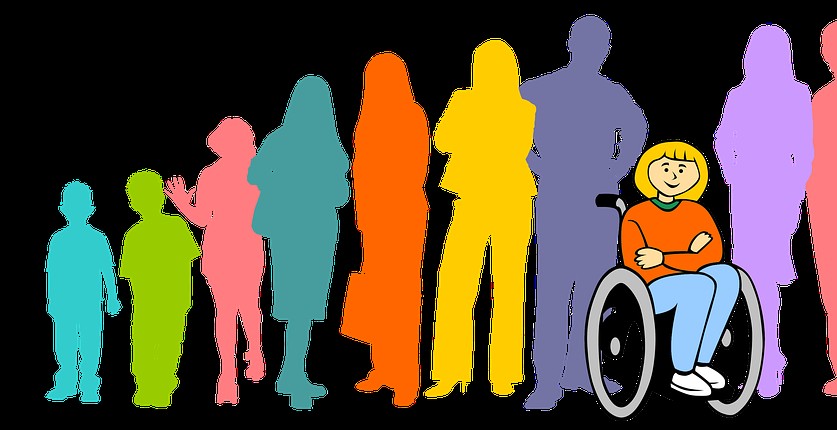How to Develop Effective Communication Skills in the Workplace: Enhancing Professional Relationships
Effective communication skills are essential in the workplace. Whether you are a manager or an employee, communication is the key to success. Communication skills help you to express your ideas, thoughts, and feelings clearly and effectively. They help you to understand the needs and expectations of others and to build strong relationships with your colleagues.
Why Effective Communication Skills are Important in the Workplace
Effective communication skills are important in the workplace for several reasons. Firstly, they help to ensure that everyone is on the same page. When everyone understands what is expected of them and what the goals are, it is easier to work together towards a common goal. Secondly, effective communication skills help to build trust and respect among colleagues. When people feel that they are being heard and understood, they are more likely to be open and honest. This can lead to better problem-solving and decision-making. Finally, effective communication skills help to create a positive work environment. When people feel that they are part of a team and that their contributions are valued, they are more likely to be engaged and motivated.
In this article, we will explore some tips and strategies for developing effective communication skills in the workplace. By improving your communication skills, you can enhance your professional relationships and achieve greater success in your career.

Understanding Communication Styles
Communication styles are the various ways in which people communicate with one another. Everyone has their unique communication style, which is influenced by their personality, upbringing, culture, and other factors. Understanding communication styles is essential for developing effective communication skills in the workplace and building healthy professional relationships.
What are Communication Styles?
Communication styles can be categorized into four main types:
- Passive: People with a passive communication style avoid conflict, often agreeing with others even if they don’t agree with them. They tend to be quiet and may struggle to express their feelings and opinions.
- Aggressive: Those with an aggressive communication style tend to be forceful and may use intimidation or manipulation to get their way. They may interrupt others and dominate conversations.
- Passive-Aggressive: This communication style combines passive and aggressive traits. People with this style may appear passive on the surface but may express their anger or frustration through sarcasm, gossip, or other indirect means.
- Assertive: The assertive communication style is considered the most effective. People with this style express their opinions and feelings clearly and respectfully, while also listening to and considering the opinions of others.
Identifying Your Communication Style
To improve your communication skills, it’s essential to identify your communication style. Think about how you typically communicate with others and ask for feedback from colleagues or mentors. Identifying your style can help you understand your strengths and weaknesses and make adjustments to communicate more effectively.
| Communication Style | Strengths | Weaknesses |
|---|---|---|
| Passive | Avoids conflict, good listener | May struggle to express opinions, may be taken advantage of |
| Aggressive | Confident, assertive | May intimidate others, may struggle with teamwork |
| Passive-Aggressive | May avoid direct conflict, may use humor to diffuse tension | May be seen as untrustworthy, may damage relationships |
| Assertive | Clear communicator, respectful of others | May struggle with confrontation, may be seen as too direct |

Active Listening
Active listening is a crucial component of effective communication in the workplace. It involves fully focusing on and understanding what the other person is saying, both verbally and non-verbally. Active listening requires concentration, empathy, and an open mind.
What is Active Listening?
Active listening is the act of paying full attention to the speaker, both verbally and non-verbally. It involves not just hearing the words but also paying attention to the tone, body language, and facial expressions of the speaker. Active listening helps to ensure that you fully understand the message being conveyed and can respond appropriately.
Tips for Active Listening
Here are some tips for practicing active listening:
- Focus on the speaker: Give the speaker your full attention, make eye contact, and avoid distractions such as your phone or computer.
- Be attentive to non-verbal cues: Pay attention to the speaker’s body language, facial expressions, and tone of voice.
- Ask questions: Clarify what the speaker is saying by asking open-ended questions.
- Reflect on what is being said: Summarize what the speaker has said to ensure you have understood the message.
- Empathize with the speaker: Try to understand the speaker’s perspective and feelings.
- Avoid interrupting: Allow the speaker to finish speaking before responding.
Active listening is an essential skill for effective communication in the workplace. By practicing active listening, you can improve professional relationships, increase productivity, and avoid misunderstandings.
The Impact of Verbal and Nonverbal Communication
Effective communication in the workplace is essential for building and maintaining professional relationships. Communication can be divided into two categories: verbal and nonverbal. Verbal communication involves the use of words and language, while nonverbal communication includes body language, tone of voice, and facial expressions. Both forms of communication have a significant impact on how messages are received and understood by others.
Effective Verbal Communication
Verbal communication is the most common form of communication used in the workplace. It includes face-to-face conversations, phone calls, emails, and other written communication. To be effective, verbal communication should be clear, concise, and respectful. It is essential to speak in a tone that is appropriate for the situation and to listen actively to others. By doing so, you can ensure that your message is delivered effectively, and that misunderstandings are minimized.
Effective Nonverbal Communication
Nonverbal communication plays a crucial role in how messages are received and interpreted by others. Body language, facial expressions, and tone of voice can all convey important information that is not communicated through words alone. To be effective, nonverbal communication should be consistent with your verbal message. If your words and body language are not aligned, your message may be misinterpreted, and your credibility may be undermined.
| Verbal Communication | Nonverbal Communication |
|---|---|
| Clear and concise | Consistent with verbal message |
| Respectful | Body language |
| Appropriate tone | Facial expressions |
| Active listening | Tone of voice |
By developing effective verbal and nonverbal communication skills, you can improve your ability to build and maintain professional relationships in the workplace. This, in turn, can lead to increased productivity, better teamwork, and a more positive work environment.

Overcoming Communication Barriers
Effective communication is vital for any workplace to function smoothly. However, communication barriers can hinder the flow of information, leading to misunderstandings and conflicts. Here are some common communication barriers in the workplace and strategies to overcome them:
1. Language Barriers
Language barriers can arise when people from different cultural backgrounds work together. This can lead to misunderstandings and misinterpretations, which can have serious consequences. To overcome language barriers, it’s essential to:
- Use simple language and avoid jargon
- Speak slowly and clearly
- Encourage questions and feedback
- Provide language training for employees who need it
2. Technological Barriers
With the increasing use of technology in the workplace, technological barriers can also arise. This includes problems with email, video conferencing, and other communication tools. To overcome technological barriers, it’s essential to:
- Ensure everyone has access to the necessary technology and training
- Use reliable communication tools
- Test communication tools before use to ensure they work correctly
- Have a backup plan in case of technical difficulties
3. Cultural Barriers
Cultural barriers can arise when people from different cultural backgrounds work together. This includes differences in values, beliefs, and communication styles. To overcome cultural barriers, it’s essential to:
- Respect and value cultural differences
- Learn about different cultures and communication styles
- Be open-minded and willing to adapt
- Encourage diversity and inclusivity in the workplace
4. Emotional Barriers
Emotional barriers can arise when people are stressed, anxious, or upset. This can lead to misunderstandings and conflicts. To overcome emotional barriers, it’s essential to:
- Be aware of your emotions and how they affect your communication
- Take a break if you feel overwhelmed
- Practice active listening and empathy
- Communicate in a calm and respectful manner
5. Physical Barriers
Physical barriers can arise when people work in different locations or have disabilities. This can make communication difficult or impossible. To overcome physical barriers, it’s essential to:
- Provide accommodations for people with disabilities
- Use communication tools that are accessible to everyone
- Arrange regular face-to-face meetings if possible
- Ensure everyone has access to the necessary information and resources
| Tip: | Regular communication training and team-building activities can help overcome communication barriers and improve workplace relationships. |

Building Professional Relationships
Building professional relationships is crucial for success in the workplace. It helps to create a positive work environment, improves communication, and fosters collaboration. Establishing strong relationships with colleagues, managers, and clients can also lead to new opportunities and career growth.
The Importance of Building Professional Relationships
Developing professional relationships is essential for creating a supportive and productive work environment. When colleagues trust and respect each other, they are more likely to work together effectively and achieve common goals. Building professional relationships can also help to:
- Improve communication and collaboration
- Enhance teamwork and problem-solving
- Develop a sense of community and belonging
- Create opportunities for career growth and advancement
Tips for Building Professional Relationships
Here are some tips for building strong and effective professional relationships:
- Communicate openly and honestly
- Show respect and appreciation for others
- Listen actively and be empathetic
- Be reliable and follow through on commitments
- Collaborate and share credit for successes
- Be open to feedback and willing to learn from others
Remember, building professional relationships takes time and effort. It requires consistent communication, mutual respect, and a willingness to work together towards common goals. By investing in these relationships, you can create a more positive and productive work environment, and achieve greater success in your career.
Conclusion
Developing effective communication skills in the workplace is essential for enhancing professional relationships. By improving communication, you can increase productivity, build better relationships with colleagues, and achieve your goals more efficiently.
Key Takeaways
- Effective communication involves active listening, clear expression, and proper body language.
- Developing communication skills requires practice, patience, and a willingness to learn from mistakes.
- Technology can be a powerful tool to enhance communication, but it should not replace face-to-face interactions.
- Building strong relationships with colleagues requires empathy, mutual respect, and open communication.
Final Thoughts
Effective communication is a critical component of success in the workplace. By taking the time to develop your communication skills and build strong relationships with colleagues, you can improve your overall job satisfaction and achieve your professional goals. Remember to be patient with yourself and others, and always strive to communicate clearly and effectively.
